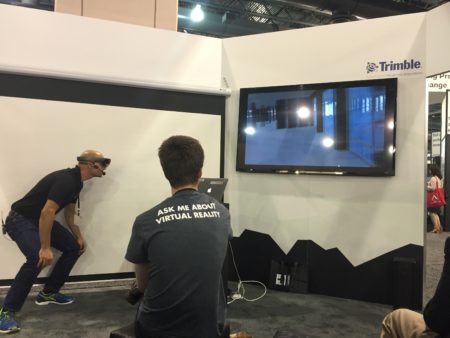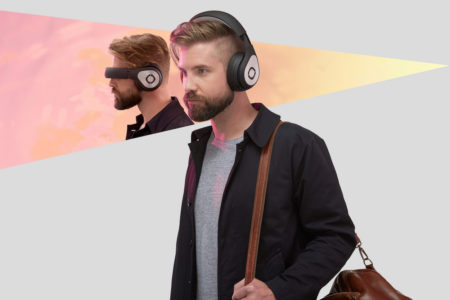Reading the critical comments from Richard Kerris’ interview on Architosh yesterday may say more about Apple’s plans for the virtual or augmented reality markets than we realize. The interview came out, coincidently, on the same day the media made a field day of Tim Cook’s pro augmented reality (AR) comments.
It’s a great thing that Tim Cook finally said something committal in nature about Apple’s plans for the VR and AR markets. Make no bones about it—that was valuable.
But the former Apple executive, Kerris—who is married to Apple’s former PR head Natalia Kerris—said a lot more about the VR/AR markets that provide directional value than Cook’s tiny comments. And he did this by doing something really quite basic: by breaking down the pros and cons of these new technologies.
A Jobsian Breakdown
A good way for us to imagine what Apple may have planned for the VR or AR markets is to imagine Steve Jobs making the keynote presentation on the new technology. Here, Kerris’ comments provide a lot of value.
MORE: Former Apple Executive Richard Kerris Says AR Future Big, Talks About ‘Glyph’
If you have paid a lot of attention to Jobs’ keynotes than you may have noticed a tried-and-true formula for how Apple does a ‘take down’ of competitors and their products in the market. It’s simple: go through all the weaknesses of a product or its technology and list their limitations. Then Jobs would introduce an Apple product that doesn’t have those limitations. And then wax on about how beautiful, thin, light, strong, and long-lasting the product is. And how it all fits into the Apple eco-system.
So Kerris’ critical comments about VR technology and devices yesterday provided some good fodder for an imagined future Apple keynote introducing VR or AR Apple gear.
Apple’s Future VR & AR Tech—Probably Won’t Do This
In “order to really experience it, you shut out your natural surroundings,” says Kerris, about one of the biggest inherent problems with virtual reality. If you have ever tried the Oculus Rift or HTC Vive, they are really cool devices. But Kerris’ comments are factual and spot on. The power of those VR devices is locked in step with their ability to fool your brain that you are in another world—not the real world.
He then list two further problems with those devices that both contribute to one unifying problem: heat build-up and possible disorientation. The nausea problem in particular may be one powerful reason why Apple has yet to product or get behind any VR at all. If the company is working on powerful VR or AR technologies for future products, the last thing the company needs today is any Newton-style embarrassment on a future VR or AR product.

01 – The Microsoft Hololens with SketchUp was shown at alpha level at AIA National 2016 and was pretty amazing stuff. This is an example of an AR device that overlays CG over real-world imagery. As such it addresses problems inherent in VR devices like Oculus Rift.
For those who don’t recall, the Apple Newton’s poor handwriting recognition technology was widely panned and parodied. It did work. It just didn’t work for many. In the same way, VR technology can work for a lot of people today; it just absolutely doesn’t work for many… particularly those who are prone to motion sickness or need solutions that stay connected to the real world.
Any VR or AR product Apple introduces has got to work for just about everyone. Just like the iPhone, the future of VR or AR will likely extend off that anchor product, much like the Apple Watch does.
Fusing Beats with AR
Richard Kerris is now CMO at Avegant, the maker of The Glyph. That device could portend to what Apple may one day introduce. The Glyph looks like a marriage between the Beats headphones Olympic swimmer Michael Phelps wears into the arena plus some Google Glasses concept.
MORE: Former Apple Executive Richard Kerris Says AR Future Big, Talks About ‘Glyph’
The idea of fusing stylish sound with stylish glasses into one device worn on the head has compelling merits and could indeed make AR and VR interesting to everyone.
One of the things The Glyph does it track head movement, a necessary ingredient in both AR and VR. People complain about the wires connecting Oculus Rift devices back to the computer powering the virtual reality vision. Because you are wired in, you are physically limited.

02 – The Glyph by Avegant at first sight may be mistaken as an Apple Beats headphone set. But it is so much more. Wearing headphones like this is a sign of “coolness” as can be attested by the numerous Olympic athletes wearing them as well as sports stars.
“AR is broader and will be bigger because it combines what you see and experience around you, while mixing in the CG elements to create an entirely new way to experience content,” says Kerris in his interview piece.
This is what was so powerfully demonstrated at the Trimble SketchUp booth at AIA National this year back in the late spring. The integration of Microsoft’s HoloLens with SketchUp technology in that late alpha demonstration had the crowd deeply wowed. In fact, that same technology has some of the largest construction companies deeply interested.
Parting Suggestions
Kerris’s comments offer a sharp analysis of the limitations of current VR and AR technologies. And the Newton story and analogy points to the dangers of being a front-runner. The Glyph by Avegant can both benefit from the “coolness factor” of Apple’s Beats brand devices and points to the potential of VR/AR technologies embedded in such a head-wearing device.
However, while the suggestion of embedding VR or AR technologies into a head-wearing device may make sense for some, Apple is most likely going to not start in that location but rather use the iPhone as the base device for both the visual, tracking, and computational software work.



Reader Comments
@richardkerris: Fusing stylish sound with stylish glasses could indeed make AR and VR interesting to everyone. https://t.co/oFlPFiOB43
@richardkerris: Fusing stylish sound with stylish glasses could indeed make AR and VR interesting to everyone. https://t.co/oFlPFiOB43
I loved my Newtons!! Every time I pulled it out people would be fascinated. I had hoped a 12″ slate would be released that ran ArchiCAD. Nothing worked as well until the iPhone & iPad. I transferred Excel estimating spreadsheets to QuickFiqure spreadsheets that I would use on the job site or at the lumber yard. EstiMATE did a great job assisting take offs from plans. A lot of my contacts on my iOS devices started on my newtons. Donesberry killed the Newton & Jobs buried it. I still have several Newtons including a couple of e-mates. They all still work perfectly.
I loved my Newtons!! Every time I pulled it out people would be fascinated. I had hoped a 12″ slate would be released that ran ArchiCAD. Nothing worked as well until the iPhone & iPad. I transferred Excel estimating spreadsheets to QuickFiqure spreadsheets that I would use on the job site or at the lumber yard. EstiMATE did a great job assisting take offs from plans. A lot of my contacts on my iOS devices started on my newtons. Donesberry killed the Newton & Jobs buried it. I still have several Newtons including a couple of e-mates. They all still work perfectly.
Comments are closed.